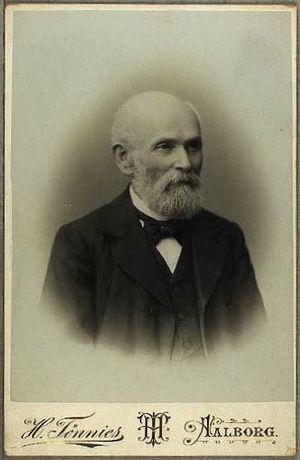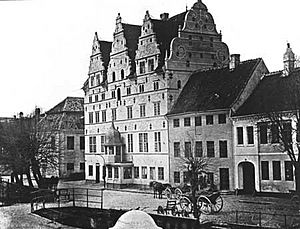Heinrich Tønnies facts for kids
Heinrich Tønnies (born May 10, 1825 – died December 11, 1903) was an important early photographer. He was German-Danish and had his own photography studio in Aalborg, Denmark. He helped shape how people took photos back then.
His Life and Work
Heinrich Tønnies was born in Grünenplan, Germany. He first learned how to paint and cut glass.
In the 1850s, he moved to Denmark. There, he learned about an early type of photography called daguerreotypy. This was a way to make a single, unique image on a silver-coated copper plate. He learned from photographers C. Fritsche in Aalborg and Wilhelm Schrøder in Copenhagen.
Soon after, Heinrich Tønnies opened his own photography studio in Aalborg. He became very good at a technique called carte-de-visite. This was a way to make small, postcard-sized photos that were easy to print many copies of. People loved to collect and trade these photos!
Most of his work was taking pictures of people, known as portraits. But he also took many photos of landscapes, showing the beauty of nature. What made his photos special was that he often showed people in their everyday working clothes, not just in fancy outfits.
He also took many pictures of soldiers in their uniforms. This was especially true around 1864, during the Second Schleswig War. Like another famous photographer, Georg Emil Hansen, Tønnies traveled to where the soldiers were. He photographed many Danish soldiers before they went off to fight. His photos give us a glimpse into what life was like for these soldiers.
See Also
- Photography in Denmark
- History of photography



